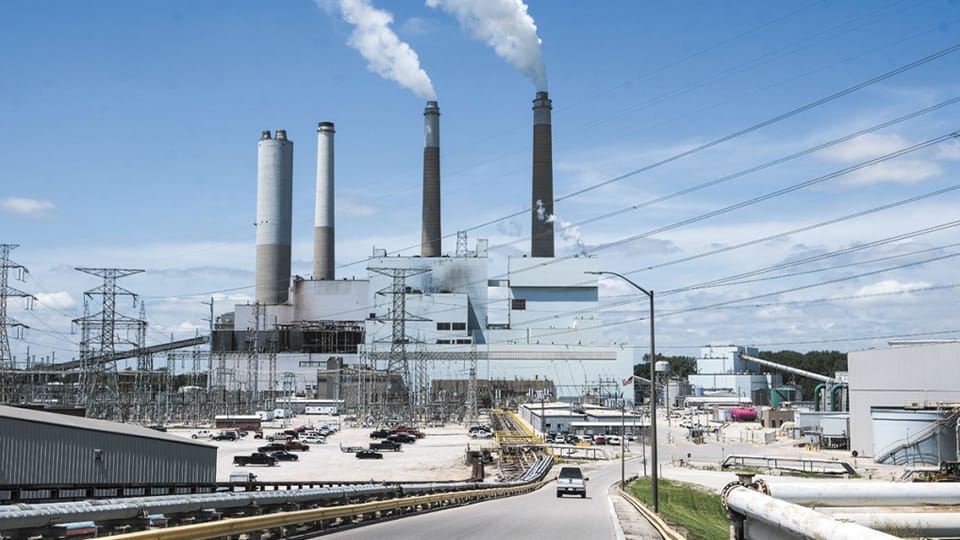Indiana utilities earn collective ‘C’ grade on clean energy goals
Subscriber Benefit
As a subscriber you can listen to articles at work, in the car, or while you work out. Subscribe Now
One Indiana utility company earned top marks and another pair nabbed no points in a national clean energy assessment. The six Hoosier utilities featured averaged a 44%—a “C” grade.
The Sierra Club, a California-based environmental advocacy group, annually examines 50 parent companies owning half the country’s fossil fuel generation.
“‘The Dirty Truth’ report is a snapshot in time. It’s looking at what is being planned right now over the next 10 years by these utility companies,” said Robyn Skuya-Boss, director of the Hoosier Chapter of the Sierra Club. They hope the report will push change among utilities—and specifically for low-scorer Duke Energy Indiana.
“We want to see Duke do better, and we want to see Duke really show us and customers who want clean, affordable and reliable energy that they are taking those concerns seriously and…moving forward with those plans over the next five years,” Skuya-Boss said.
The study metrics are based on goals set by President Joe Biden. He wants the country to get 80% of its energy from emissions-free sources by 2030 and 100% by 2035.
The organization evaluated utilities’ renewable energy transition plans based on their commitments to retire coal-powered generation by 2030, build no new natural gas plants through 2035 and add enough renewable energy to replace their fossil fuel generation by 2035.
The 75 operating subsidiaries have committed to retiring just 30% of their coal generation and plan to build 93 gigawatts of natural gas, according to the report. They’re set to build enough renewable sources to replace 52% of their fossil fuel generation.
Two Indiana utilities had no climate goals and scored zero points.
The Sierra Club gave Duke Energy Indiana its worst score since the report launched in 2021. The utility serves much of the state.
Duke earned 13% in 2021, 27% in 2022 and 26% in 2023—but nothing this year.
The company plans to convert two units at its coal-powered Gibson Station to also run on natural gas; that would delay the plant’s retirement by three years, until 2038, WFYI reported. Duke would additionally wait to bring on most of its renewable energy until well into the 2030s, per its 20-year plan.
Duke Energy Indiana spokeswoman Angeline Protogere said U.S. Environmental Protection Agency rules will let utilities co-fire units with coal and natural gas until 2038.
“We’re still reducing emissions, but we’re also managing costs for customers,” she wrote via email. “Our statewide plan is a balance of choices ranging from co-firing existing resources, to replacing some aging units with more efficient energy, to adding renewable power to our system.”
Skuya-Boss criticized the company for continuing to invest in coal, saying Gibson lost almost $56 million last year. That number is according to the Sierra Club, which cites public data.
“I don’t know very many companies that, when they’re operating at a loss, then get to come back and say, ‘Hey, we want a $400 million-plus increase over current rates for putting more money into these plants,” Skuya-Boss said. “It’s a bad choice that, you know, customers really can’t afford.”
Spokeswoman Protogere, however, said she is “not familiar” with the Sierra Club’s source, adding that Gibson is a “critical source of power” for Indiana.
She defended Duke as having the lowest average residential rates in the state, and said the company has kept operating expenses flat since 2020 to facilitate long-term investments.
“Our rate request centers on the $1.6 billion in improvements we’ve made in a modernized electric grid to reduce power outages, hundreds of miles of new power lines, environmental responsibilities, investments in reliability at our power plants, and increased electric grid security,” Protogere said.
The utility’s request would raise its annual revenues by about 16%, or $492 million. The Indiana Office of Utility Consumer Counselor, a state agency, thinks only a 6% increase or $185 million is “warranted,” according to its website.
Protogere wrote that Duke weighs growing power demand, cost to customers and changing environmental requirements in making decisions about its generation fleet—and must balance the need for 24/7 power with “weather-dependent” renewable energy.
“Our ultimate obligation is to provide power that is reliable and affordable while we diversify our generating resources,” she added. “We’re making an orderly transition to diversify our resources.”
The Hoosier Energy Rural Electric Cooperative, which serves parts of Illinois and Indiana, also earned an “F” with zero points. It earned a 49% in 2021, 12% in 2022 and 5% in 2023.
Skuya-Boss said it was dinged for buying power from the Merom Generating Station, a coal-fired plant. Hoosier Energy owned the facility until 2022, when the cooperative sold it to Hallador Energy Company.
Other utilities
AES Indiana, which serves the Indianapolis area, earned a “B” at 56%. Its score, in contrast, has generally ticked up since 2021.
CenterPoint Energy, which covers southern Indiana, also scored a “B” with 59%. So did Indiana Michigan Power, serving the state’s northeast, with 66%.
NiSource, parent company for the Northern Indiana Public Service Company, was the only one to earn an “A,” at 82%. NIPSCO plans to halt coal generation by 2028 and invest in wind and solar, which Skuya-Boss said is reflected in the utility’s grade.
In the report, the Sierra Club suggested that utilities alter their planing processes by using scenarios that meet Biden’s climate goals in modeling, take greater advantage of federal incentives and more.
Indiana lawmakers, however, have sought to delay or halt coal plant closures in recent years, describing the energy produced as reliable and affordable.
The Indiana Capital Chronicle is an independent, not-for-profit news organization that covers state government, policy and elections.
